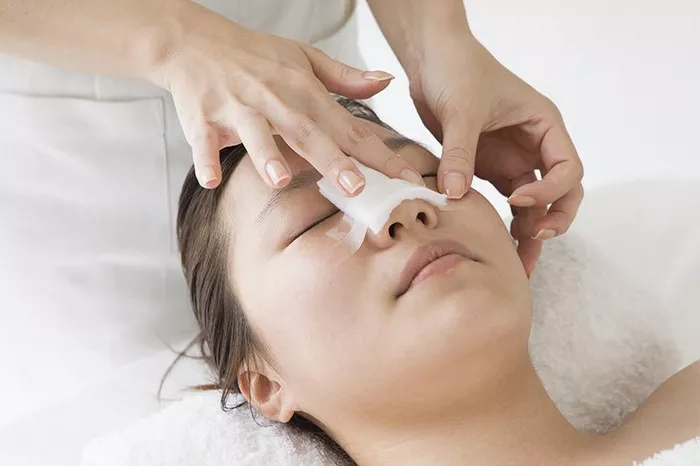Rhinoplasty, also known as a nose job, is a popular cosmetic surgery that can improve the appearance and function of the nose. The procedure involves making incisions in the skin and underlying tissues to reshape the nose. While the results of rhinoplasty can be dramatic and long-lasting, the procedure does involve the formation of scar tissue. In this article, we’ll explore what scar tissue looks like after rhinoplasty and provide some tips for minimizing its appearance.
Scar Tissue Formation After Rhinoplasty
Scar tissue formation is a natural part of the healing process after any surgery, including rhinoplasty. During the procedure, the surgeon makes incisions in the skin and underlying tissues to reshape the nose. As the incisions heal, scar tissue forms to help strengthen and support the new shape of the nose.
The amount of scar tissue that forms after rhinoplasty can vary depending on several factors, including the extent of the surgery, the patient’s individual healing process, and the surgeon’s technique. In some cases, the scar tissue may be minimal and barely noticeable. In other cases, the scar tissue may be more pronounced and visible.
What Does Scar Tissue Look Like After Rhinoplasty?
Scar tissue after rhinoplasty can take on several different appearances, depending on its location and severity. Some of the most common types of scar tissue after rhinoplasty include:
Redness: In the early stages of healing, scar tissue may appear red or pink in color. This is due to the increased blood flow to the area as the body works to repair the incisions.
Swelling: Scar tissue can also cause swelling in the area around the incisions. This swelling may be more noticeable in the first few weeks after surgery but should gradually subside over time.
Raised or bumpy: In some cases, scar tissue may be raised or bumpy in appearance. This is known as hypertrophic scarring and is more common in people with darker skin tones.
Indented or depressed: In other cases, scar tissue may be indented or depressed in appearance. This is known as atrophic scarring and is more common in people with thinner skin.
Discoloration: Scar tissue may also cause discoloration in the area around the incisions. This may be more noticeable in people with darker skin tones.
Minimizing Scar Tissue After Rhinoplasty
While some degree of scar tissue formation is inevitable after rhinoplasty, there are several steps you can take to minimize its appearance. Here are some tips for minimizing scar tissue after rhinoplasty:
Follow your surgeon’s post-operative instructions carefully, including any wound care instructions.
Avoid smoking and excessive alcohol consumption, as these can slow down the healing process and increase the risk of complications.
Keep the incision site clean and dry, and avoid touching or picking at it.
Use sunscreen to protect the incision site from sun damage, which can cause discoloration and make scars more noticeable.
Massage the incision site gently, as directed by your surgeon. This can help to break up scar tissue and improve its appearance.
Consider using silicone sheets or gels to help minimize the appearance of scars.
Talk to your surgeon about any concerns you have about scar tissue formation and ask for their recommendations for minimizing its appearance.
Types of Scarring After Rhinoplasty
There are several types of scarring that can occur after rhinoplasty. The type of scarring that develops will depend on a number of factors, including the extent of the surgery, the patient’s skin type, and how well the patient heals. Here are some of the most common types of scarring after rhinoplasty:
Hypertrophic scars: These scars are raised and thick, and may be red or pink in color. They can be itchy or painful, and may take several months to fade.
Keloid scars: Keloid scars are similar to hypertrophic scars, but they continue to grow beyond the boundaries of the original incision. They can be difficult to treat and may require additional surgery.
Atrophic scars: Atrophic scars are indented or depressed, and may be more noticeable in people with thinner skin. They may also be more common in areas where there is less underlying tissue, such as the bridge of the nose.
Pigmented scars: Pigmented scars are darker than the surrounding skin and may be more noticeable in people with darker skin tones.
Hypopigmented scars: Hypopigmented scars are lighter than the surrounding skin and may be more noticeable in people with lighter skin tones.
When to Seek Medical Attention
While some degree of scar tissue formation is normal after rhinoplasty, there are some signs that may indicate a problem. If you experience any of the following symptoms, you should seek medical attention:
Excessive redness, swelling, or pain at the incision site
Yellow or green discharge from the incision site
Fever or chills
Excessive bleeding or bruising
Worsening of the scar tissue appearance over time
These symptoms may indicate an infection or other complication and should be evaluated by a medical professional as soon as possible.
Conclusion
Scar tissue formation is a natural part of the healing process after rhinoplasty. While some degree of scar tissue is inevitable, there are several steps you can take to minimize its appearance. By following your surgeon’s post-operative instructions carefully and taking steps to protect and care for the incision site, you can help to minimize the appearance of scar tissue and enjoy the results of your rhinoplasty with confidence. If you have any concerns about scar tissue formation after rhinoplasty, be sure to discuss them with your surgeon.


